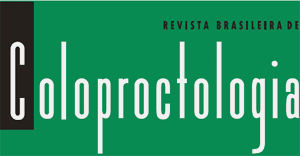Analysis of a questionnaire with 52 questions about hemorrhoidal disease (HD) answered by 77 Brazilian specialists allowed the following conclusions: EPIDEMIOLOGY: The meantime of medical practice was 18.6 years; the 77 specialists attended ± 1,097.860 patients, HD being diagnosed in ± 393,763 (35.86%), and ± 102,400 patients (± 26%) undergoing surgical treatment. The approximate incidence by gender of HD was 42% in men and 58% in women, and the incidence of surgery 43% in males and 57% in females. The incidences of HD according to age were: 7% under 20 years, 40% between 21 and40 years, 40% between 41 and 60 years and 13% above 60 years of age. CLINICAL AND NON SURGICAL TREATMENT: clinical approach for HD was carried out in ± 291.363 patients. The non surgical treatment of choice was rubber band ligation (94,0% of the specialists), mainly for second grade internal hemorrhoids (85.2%), being the most common procedure the approach of a single ligation by each session (74.1%), without plicomectomy (67.1%). Satisfaction grade reached 91.0% (good and optimal). Rubber band ligation was used in ± 48,273 patients (12.50%), no complication being reported by most of the specialists (42 specialists, 53.95%), being hemorrhage the most common complication (69 cases, 0.142% of 48,273 ligations). HEMORRHOIDECTOMY: 102,400 hemorrhoidectomies were performed by the 77 specialists, being the intensity of anal symptoms the main indication for surgery despite of the grade of the HD (64.47%). Open hemorrhoidectomy (Milligan-Morgan) was the most used technique (65.79%) followed by closed hemorrhoidectomy (Ferguson) (21.05%). The most used anesthesia were spinal blocks, being 52.63% of raquianesthesia and 26.32% of peridural anesthesia. Knife position was the number one in preference (44.73%), followed by forced gynecologic position (22.37%) and regular gynecological position (21.05%). Most of the specialists preferred to perform hemorrhoidectomy in hospitalized patients (78.94%), being 55.26% as full day patients (55.26%) and 23.68% as day-patient. Antibiotic therapy was admitted by 77.0% of the specialists, being 47.0% in selected cases and 30.0% as routine; second generation cefalosporin was the most used antibiotic (13.0%) followed by the association of metronidazol and aminoglycoside (7.5%). POST OPERATORY: Among the analgesics used anti-inflammatory occupied the first place (29.0%), following paracetamol (21.5%), morphine (15.3%) and sodium diclophenate (13.0%). Routine rectal touch was carried out by 44 specialists (57.0%), being 34.5% with the aim of detection a possible anal stenosis and 25.5% to forbid the progress of an eventual stenosis. Among several post operatory complications called the attention the hemorrhage (admitted by 52.0% of the specialists) and anal stricture (9.0% of the specialists). 58 specialists (75.0%) ordered routine histopathology examination of the resected specimens. 55.52% of the specialists do not perform associated surgeries with HD. 57.89% of the specialists use clinical approach as far as hemorrhoid thrombosis is concerned. PPH (Procedure for Prolapsed Hemorrhoids): 35 specialists never tried PPH (45.0%) and 62% of them have never tried and do not feel like trying the technique. 38 specialists stated they tried this procedure (49.0%); 17 (22.0%) did not continue with PPH while 21 continued to use the technique. Of the 17 specialists 42.85% did not pursued using PPH because they did not like the results (not so good as the surgical techniques they use); 21.42% because the costs of the procedure are prohibitive; and 21.42% because the plans of health insurance companies they are affiliate do not authorize the technique. In the 487 cases of PPH carried out by the 12 specialists extra hand stitches were necessary in 55 patients (11.29%) and complications were confirmed in seven patients: four cases of anal stenosis (0.8%), two cases of hemorrhage (0.4%) and one case of unsatisfactory result with indication of conventional surgery (0.2%).
Hemorrhoidal Disease; Questionnaire about Hemorrhoidal Disease; Brazilian Coloproctologists








































